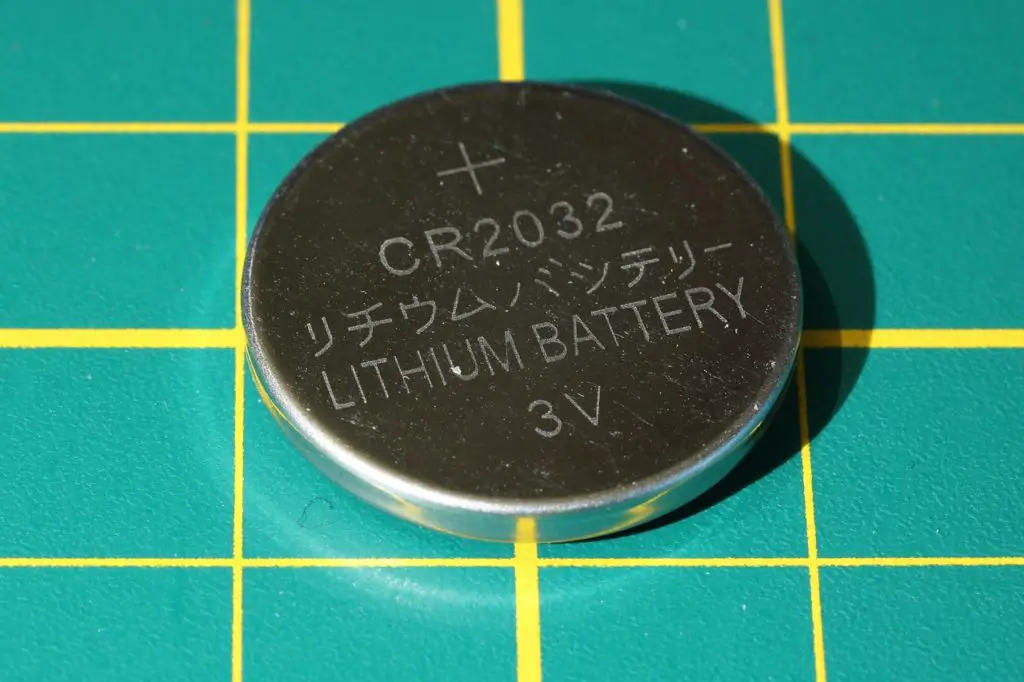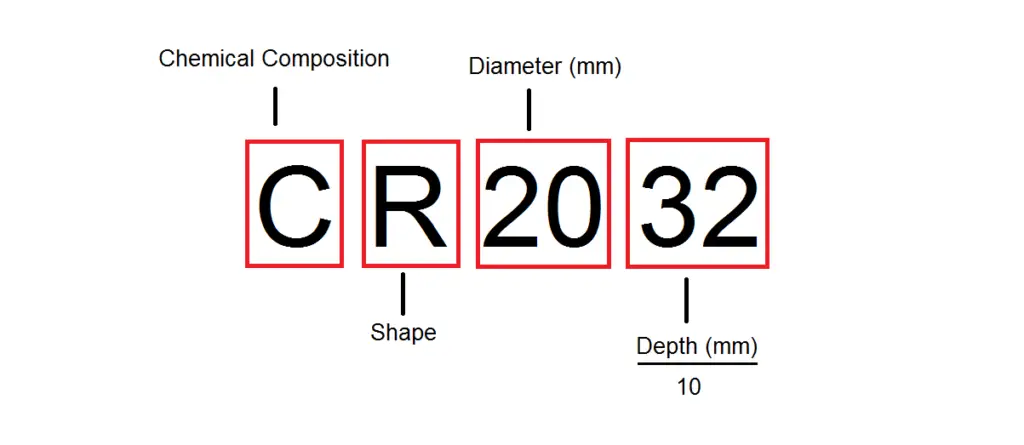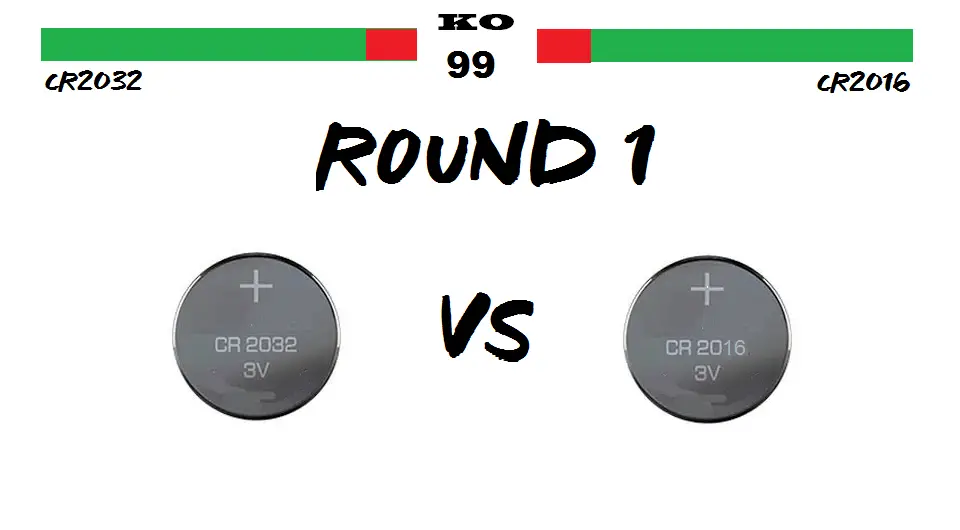Portable electronic devices require a means of portable power to help them function. This portable power comes in the form of batteries.
Batteries help provide power to many portable devices which include things like, smartphones, digital watches, portable speakers, Laptops just to name a few.
There are many types of batteries, and one of them used for smaller electronic devices is known as a Coin Cell.
Two very popular variations of the coin cell battery are the CR2016 and CR2032.
This article shall take a closer look at both batteries and put them head to head to compare key characteristics and differences.
Types of battery
Before we delve into CR2016 vs CR2032, let’s take a quick look at the many different types of battery that help power our everyday portable electronic devices.
This will help give you more information on what types of battery the CR2016 and CR2032 are.
Batteries can be split up into two major categories;
- Primary (non-rechargeable)
- Secondary (rechargeable)
Primary batteries are also often referred to as disposable batteries due to the fact that after they use up all their charge, they need to be disposed of.
They are non-rechargeable.
However, on the other hand, when a secondary battery has used up all its charge, it can be ‘recharged’ using the right type of battery charger.
The major difference that sets apart the different types of battery are their packaging (shape and size), which include;
- 9V (rectangular)
- AA (cylindrical)
- AAA (cylindrical)
- C (cylindrical)
- D (cylindrical)
- Coin Cell
- Flat pouch
- Lead Acid (rectangular)
Each of these batteries can come in many different chemical compositions such as Alkaline, Nickel-Cadmium, Nickel-Metal Hydride, Lithium, amongst the most popular.
CR2016 and CR2032 batteries
So, when it comes to CR2016 and CR2032 batteries, they fall under the coin cell category.
The name coin cell is aptly given due to the fact that they resemble a coin. They are also sometimes referred to as button cells.

As with many products, there are many companies that produce and sell coin cells. However, one thing that is consistent across manufacturing, is the naming convention of coin cells.
This naming convention is crucial as it gives us information of the physical aspects of the coin cell (shape and size), as well as its chemical composition.
It typically involves two letters at the beginning, followed by four numbers.

The first letter represents the chemical composition of the battery. In this instance C indicates that the battery is composed of Lithium Manganese Dioxide (LiMn02).
The next letter in the sequence informs us of the shape of the battery. R here tells us that the battery is round.
Next we have the four numbers.
The first two numbers (20), represent the diameter (in mm) of the battery which will be 20mm.
While the last two numbers (32), represent the height of the battery. However, this number needs to be divided by 10, which gives us a height of 3.2mm.
Key specifications of CR2016 and CR2032 batteries
Just like you have a set of characteristics (hair color, eye color, height, weight, etc), that sets you apart and makes you unique, batteries also come with a set of important specifications that set them apart.
These specifications give the battery unique characteristics which help us choose the right one for a particular application.
This is no different for the CR2016 and CR2032 batteries.
Below is a set of important specifications which every battery has, enabling us to select the right one for the right job.
Size and Shape
The first most obvious specification of any battery is its appearance, which includes its physical dimensions and shape.
As we learnt earlier, batteries come in a range of sizes and shapes, each having its own specific applications.
For example, Flat pouch batteries are most commonly used for handheld mobile devices such as smartphones (due to the need for having a slim profile).
Coin cell batteries like the CR2016 and CR2032 are most associated with smaller electronics like calculators, wrist watches, car key fobs, etc, again because their size and shape fits the need of the application.
Nominal voltage
Next on the list of important specifications, is Nominal Voltage.
Without voltage, electronic circuits would not be able to function. It is the driving force that helps push electrons (current) around a circuit.
Voltage is produced stored within a power source such as a battery. In the case of a battery, this voltage is produced through electrochemical reactions.
Electronic devices have different power requirements, which means that they do not all operate at the same voltage and which is why batteries come in a variety of voltages.
Batteries will have what is known as a Nominal Voltage.
This is the voltage at which the battery will be able to produce full power.
When the battery has lost some of its charge, the voltage will start to drop, which is an indication that the battery is going flat.
Capacity
You might have felt the frustration when the battery of a mobile device such as your smartphone is about to die and needs recharging.
Some batteries run out of charge fast, while others last longer.
This is governed by the Capacity of the battery, or Battery’s Capacity.
Battery capacity determines how much charge a battery is capable of storing.
Imagine a battery like a cup of water, where the cup represents the battery, and the water represents charge.
A larger cup (battery), will be able to hold more water (charge), than a smaller cup (battery).
However, a note has to be made, sometimes the chemical composition of the battery can also determine a battery’s capacity.
This means that a smaller sized battery will still be able to have a lot of charge.
Also ,the capacity of a battery can be affected by the magnitude of current being drawn by the load.
Chemical composition
As we just saw earlier, voltage is stored and produced in a battery via electrochemical reactions. This electrochemical reaction converts chemical energy into electrical energy.
Batteries come in many variations of chemical composition which help in producing voltage.
Each chemical composition has its own set of advantages and disadvantages for things like how they perform under certain temperatures, lifespan, discharge rate, battery capacity, to name a few.
Below are some of the most common types of chemicals used in batteries;
- Alkaline
- Nickel-Cadmium
- Nickel-Metal Hydride
- Lithium-Ion
- Lithium-Manganese Dioxide
- Lead acid
- Zinc-Carbon
Operating temperature
Last but not least on the list of important battery specifications, is operating temperature.
Temperature plays a big role in many aspects of life.
For example, if you are a runner, high temperatures increase your body temperature and cause you to become dehydrated which all leads to a decrease in muscle endurance.
On the other hand, colder temperatures have been shown to decrease muscle strength and metabolism.
So there is an ideal range of temperatures (that sit between a minimum and maximum value) which is ideal for the performance of runners.
Again, this is also true for batteries.
Straying outside these minimum and maximum temperatures can affect the performance of batteries.
In colder conditions, the chemical reactions within the battery are slowed, while hotter temperatures can reduce the lifespan of a battery.
Closer look at CR2016 and CR2032 specifications
Let’s take a closer look at the key specifications of the CR2016 and CR2032.
CR2016 specifications:
| Nominal Voltage (V) | 3 volts |
| Capacity (mAh) | 90 mAh |
| Operating temperature | 0°C (32°F) – 60°C (140°F) |
| Height (mm) | 1.6 mm |
| Diameter (mm) | 20 mm |
| Chemical composition | Lithium Manganese Dioxide (LiMn02) |
CR2032 specifications:
| Nominal Voltage | 3 volts |
| Capacity | 235 mAh |
| Operating temperature | 0°C (32°F) – 60°C (140°F) |
| Height (mm) | 3.2 mm |
| Diameter (mm) | 20 mm |
| Chemical composition | Lithium Manganese Dioxide (LiMn02) |
CR2016 vs CR2032 – Key differences and similarities
Now that we have covered the different specifications of batteries, as well as taken a look at the specifications for the CR2016 and CR2032, we can compare the two batteries and identify key differences as well as similarities.
Key differences #1: Physical dimension
If you were holding both these batteries in your hands, even without a measuring tool such as a ruler or vernier caliper, you would still be able to notice that while both batteries share the same diameter, they vary in thickness.
The CR2032 is much thicker with a height of 3.2mm, while the slimmer CR2016 comes in at 1.6mm.
Figuring out the height of CR batteries comes down to what we learnt earlier with the naming conventions of these batteries.
The last two numbers represent the height.
However, to get the height (in millimeters), you have to take the two digit number and divide it by 10.
Lucky for everyone, manufacturers have the name printed on the battery. So, if you do not have a measuring tool, you will still be able to find the height of the battery.
Key differences #2: Capacity
The next and final difference is the capacity.
Due to the CR2032 being bigger (physically), it has more space to hold more charge and therefore has a greater capacity.
Specifically 145mAh more compared to the CR2016.
Key similarities #1: Nominal voltage
While the CR2032 and CR2016 differ in physical dimension, and capacity, they do share many similarities.
First is their nominal voltage.
Both batteries have a nominal voltage of 3 volts.
Key similarities #2: Chemical composition
There are many variations of the CR battery, as well as many companies who have a hand in manufacturing them.
While there might be other versions of the CR coin cell batteries with different chemical compositions, the most common used is Lithium Manganese Dioxide (LiMn02).
Both the CR2016 and CR2032 use Lithium Manganese Dioxide.
Key similarities #3: Operating temperature
Since they share the same chemical make up, both batteries are affected by temperature in identical fashion.
They share the same range of operating temperature; 0°C (32°F) – 60°C (140°F).
Key similarities #4: Primary or Secondary
We learnt earlier that batteries fall into two major categories; Primary (non-rechargeable) or Secondary (rechargeable).
CR2016 and CR2032 batteries traditionally fall under the Primary category which means that they will have to be disposed of once they have run out of charge.
However, both are available in rechargeable versions as well, which you most likely won’t find in your local supermarket, but at specialist electronic stores.
Are CR2016 and CR2032 batteries interchangeable?
You are possibly reading this article because you are deciding on whether to use a CR2016 or CR2032 for a certain electronic device.
So are CR2016 and CR2032s interchangeable?
All electronic devices have an operating voltage in which they operate safely and efficiently. Supplying a voltage outside of these parameters means you run the risk of damaging the device or not being able to power it effectively.
We now know that both batteries have a nominal voltage of 3V, which means that they both have the capability to provide a voltage of 3V to electronic devices that require that specific amount.
However, the first hurdle to overcome before doing so is the difference in physical dimension.
Mobile electronic devices will have in-built battery holders with specific dimensions to accommodate for certain types of batteries.
For example, you might have had to replace the batteries in your TV remote before. Most of the time, these are powered by AAA batteries.
This means that they will only accept AAA batteries.
The same holds true for devices with battery holders specific to the CR2016 or CR2032. Since they vary in thickness, you might run into troubles with replacing one with the other.
A CR2032 might be too thick for a CR2016 battery holder, and a CR2016 might be too slim for a CR2032 battery holder.
Another issue you might run into is capacity.
If you need to power a device for long periods of time, the CR2032 is an ideal choice as it has more capacity.
So, CR2032 and CR2016 are not interchangeable if you are trying to match capacity ratings.
Which is a better option between a CR2016 and CR2032?
When deciding which is better, there is no clear answer.
This is due to the fact that the needs of your application will determine which battery is the most suitable.
If your device is smaller, and requires less capacity, the CR2016 is a more logical option. On the other hand, if you require more capacity to run a device for longer, the CR2032 is the go to.





